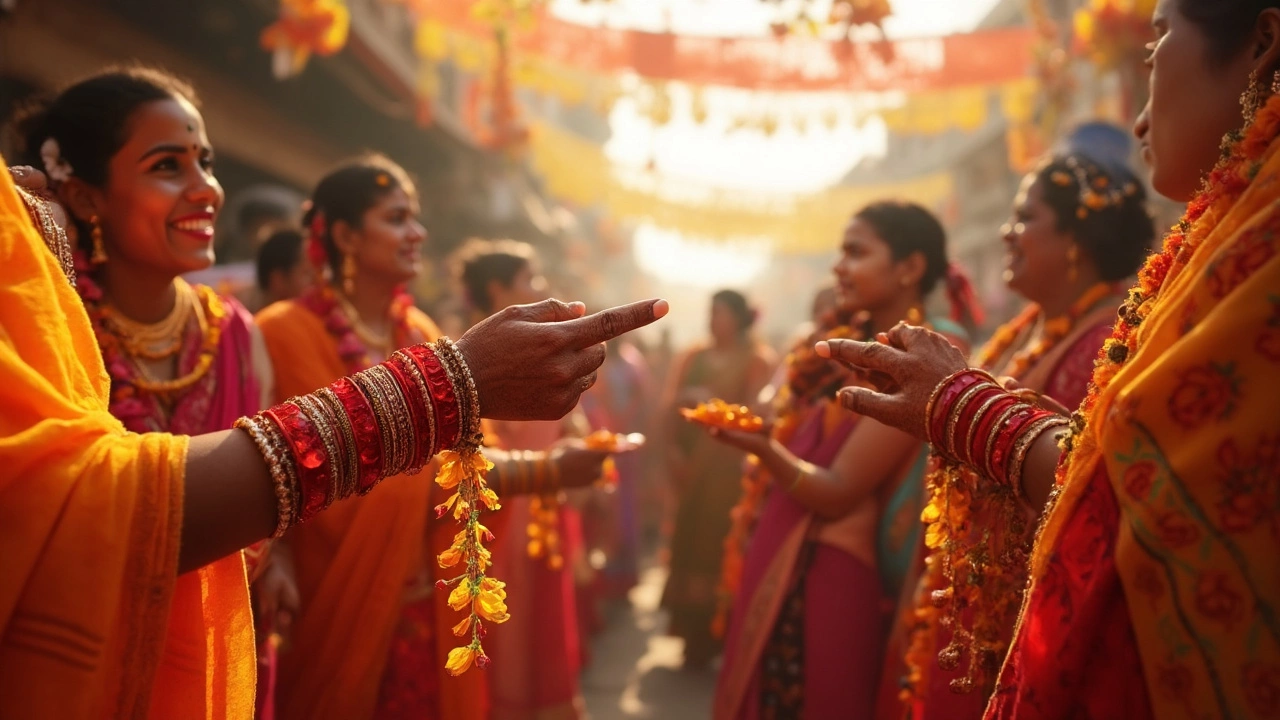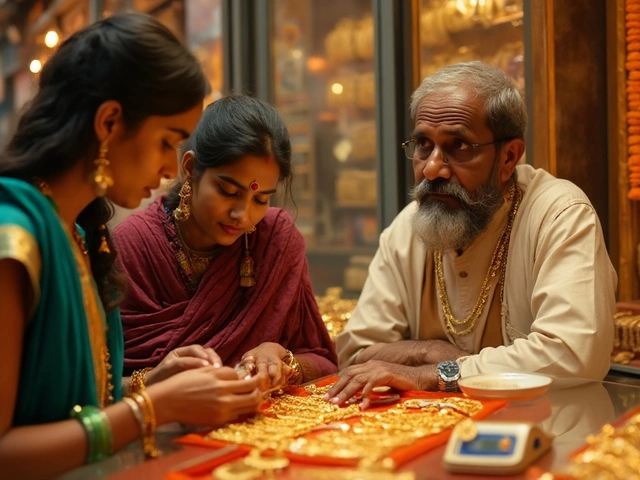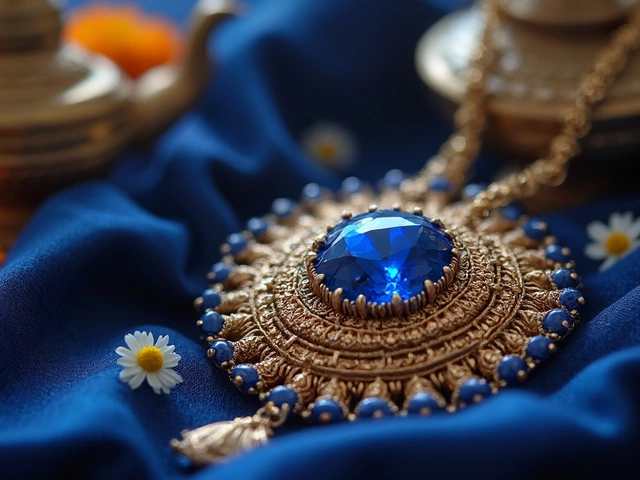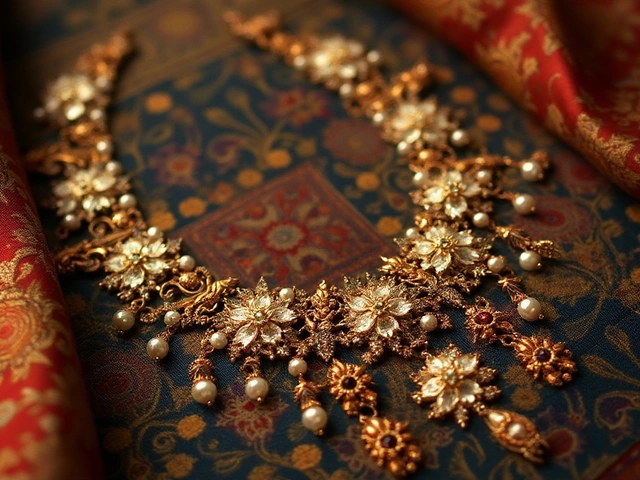Ever wondered why red bangles are everywhere in India, especially during weddings? These aren’t just pretty accessories—red bangles mean something big. Most Indian girls and women wear them as a sign of good luck and happiness, especially after getting married. Red, as a color, shouts energy, love, and life. That’s why bridal hands are piled high with these bold bangles, making them impossible to miss.
If you’re new to the whole bangle thing, here’s something useful: Red bangles are often made of glass, but they also come in lac, gold, or plastic. Married women wear them daily after their weddings, and breaking a bangle by accident is said to bring bad luck. Sound dramatic? For many, it’s super real. Whether you’re shopping for your first pair or want to learn the ropes before a family event, knowing why these bangles matter will help you fit right in and avoid awkward cultural blunders.
- Why Red? The Meaning Behind the Color
- Bangles as Symbols in Indian Marriages
- Regional Customs: Not Just One Style
- From Childhood to Marriage: When Do Girls Start Wearing Red Bangles?
- Tips for Buying and Wearing Red Bangles
- Keeping Traditions Alive in Modern Times
Why Red? The Meaning Behind the Color
Red in India isn’t just a nice color—it’s a big deal. For generations, it’s been linked to powerful stuff: love, strength, and yes, big life moments like marriage. When it comes to red bangles, people see them as a must-have for brides because red is all about new beginnings and good luck. Hindu weddings especially lean into this tradition, with red being the main color for bridal outfits, bindis, and, of course, bangles.
Digging a bit deeper, red isn’t just for show. According to Ayurvedic beliefs, wearing red helps boost positive energy. Some families even believe the glass bangles ‘sing’ a happy note as the bride moves her hands—almost like a wish for happiness and steady relationships. In a typical North Indian wedding, the sight of red bangles signals that the bride is officially starting her married life. It pretty much announces, “I’m taken, and I’m celebrated!”
Here’s a quick look at what red stands for in Indian culture:
- Love and passion – perfect for the start of a marriage.
- Prosperity – families hope the couple’s future is secure and bright.
- Fertility – red is seen as a symbol of fertility and life.
- Protection – believed to keep negative vibes at bay.
Even outside of weddings, you’ll spot red bangles during major festivals or family events where good fortune is the goal. A cool fact: In states like Punjab and Maharashtra, families have their own rituals around gifting or breaking bangles—and red is almost always in the mix. Another thing you’ll spot? Unmarried girls like to wear red bangles just for fun during events, but only married women wear them religiously. So next time you see this color everywhere in a wedding video or at an Indian shop, you know there’s more to it than style—it’s a tradition loaded with meaning.
Bangles as Symbols in Indian Marriages
When it comes to Indian weddings, bangles aren’t just jewelry—they’re loaded with meaning. As soon as a woman gets married, wearing red bangles becomes kind of non-negotiable. These bangles show that she’s married, bringing in wishes for love, prosperity, and a long happy life with her partner.
The type and number of bangles can change from region to region. For example, North Indian brides often wear sets of glass bangles called ‘chooda,’ which usually includes a mix of red and white pieces. In Maharashtra, green glass bangles are added to reds, but the red ones are always at the center of attention. Down south in Tamil Nadu and Karnataka, gold bangles mix in with red to create a different style but the red meaning stays the same.
There’s even a bit of ritual to the whole thing. On the wedding day, the bride’s family helps her put on the red bangles as a way of blessing her new life. The bangles are supposed to be worn for months—or even up to a full year after getting married. Removing them too soon is seen as bad luck.
- Red bangles are believed to protect the marriage from bad vibes and jealous eyes.
- Breaking the bangles accidentally, especially soon after marriage, is seen as a bad omen.
- The sound of bangles, that little jingle, supposedly brings harmony into the home.
If you check out any big Indian wedding, you’ll notice bangles aren’t just an accessory—they’re right at the heart of the celebration.
Regional Customs: Not Just One Style
India is packed with traditions, and the way girls and women wear red bangles changes from state to state. In Punjab, brides can't skip the famous chooda—bright red and white bangles stacked up to the elbow and worn for several months after the wedding. Go over to Bengal, and you'll see women wearing iron bangles called 'loha'. These usually have a thin coating of gold and sometimes include one or two red glass ones for color and luck.
If you take a trip down south, you'll see something completely different. Tamil and Telugu brides mix red glass with green for prosperity, while Maharashtrian women add a unique touch: thin green glass bangles paired with chunky gold ones. Red is always present, but rarely alone.
Rajasthan and Gujarat spin their own magic by mixing ivory bangles (called 'chooda') with red lac or glass ones. The whole point? Show marital status and bring good vibes to the couple's new life together. Even the number and combination of bangles matter—some communities have set rules, like wearing a specific minimum or only removing them at certain times of the year.
- Punjab: Chooda (red and white) worn for 40 days to a year.
- Bengal: Loha (iron/gold) paired with red glass for married women.
- Maharashtra: Green stacked with two red and two gold bangles for brides.
- South India: Mix of red and green glass bangles with gold filigree in Telugu/Tamil weddings.
- Rajasthan/Gujarat: Ivory bangles mixed with red lac or glass as a full set.
Want a quirky number? In urban Punjab, nearly 70% of brides still wear chooda for at least the first six months after marriage, even if they're working full-time jobs. So, it's not just a village or old-school thing—these traditions get passed on and adjusted, but they don't disappear.
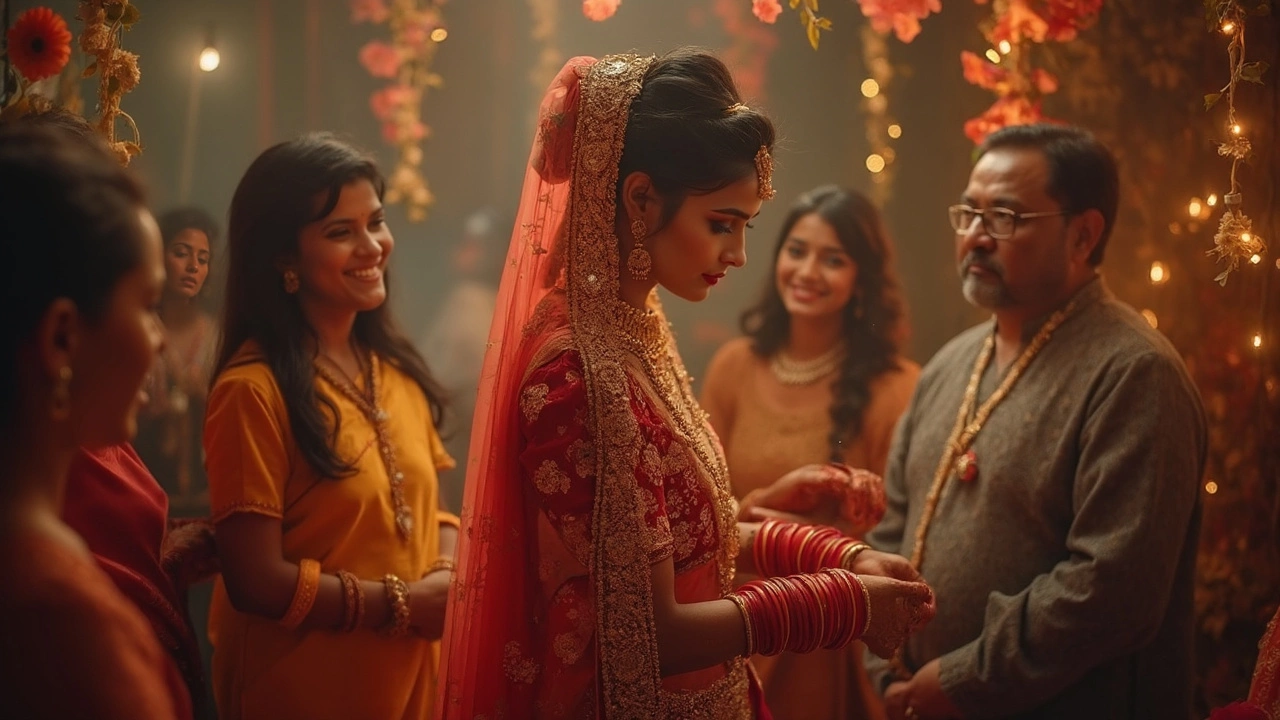
From Childhood to Marriage: When Do Girls Start Wearing Red Bangles?
Most girls in India start wearing bangles when they’re still kids. It’s pretty common to see babies and toddlers with tiny glass or plastic bangles on their wrists, especially during festivals or family events. Parents love dressing up their daughters, and bangles are a big part of that look. But here’s the thing: these early bangles come in every color under the sun—not just red.
The red bangles get special attention as girls get older and reach marriageable age. In Indian tradition, red bangles really kick in when a girl is engaged or about to get married. For example, North Indian brides are expected to wear a stack of red and white bangles called ‘chooda’ starting right from their wedding day. The chooda can only be put on by the bride’s maternal uncle and aunt in a big ceremony. Newly married women will often keep wearing these for months (sometimes up to a year!) as a visible sign of their new status.
In some regions like Bengal, red bangles called “shakha pola” (made from conch shell and red coral) are worn by married women every day. Girls start with fashion bangles, but when it comes to red ones, it’s mostly about adult milestones—especially marriage.
- Young girls: Mostly wear colorful bangles for fun or festivals.
- Teenagers: Sometimes wear red bangles at important religious or family events.
- Engagement/wedding: That’s when red bangles get really important and symbolic.
- Married women: Expected to wear red bangles regularly, sometimes as a daily ritual.
If you’re ever picking out bangles for a special occasion, match the color with the event. For weddings, especially in North India and Bengal, skip the multi-colored ones and go all-in on red. That’s where the tradition lies.
Tips for Buying and Wearing Red Bangles
Red bangles come in a bunch of styles, materials, and price points, but not every pair will suit your needs or stand up to regular use. Start with this: check what material works for you. Glass bangles are the go-to for tradition and are a must for most North Indian bridal looks, but they’re fragile. If you’re nervous about breaks or want something kid-proof, try plastic or metal ones—they're way less likely to shatter and still look great.
Getting the right size matters. Bangles are supposed to slide onto your wrist but not fall off. The best way? Measure the width of your palm where it’s the widest, or try on a few at a shop. Avoid buying super tight bangles, especially if you’re not used to wearing them—they’re hard to put on and can actually hurt after a few hours.
When shopping in local markets or online, you’ll notice red bangles often come in sets. Pay attention to how many are supposed to be worn. Some bridal sets include 21 or even 51 bangles per hand, but for casual wear, just a few is totally normal. Watch out for prices that are too good to be true—cheap glass bangles can snap fast or have rough edges that scratch your skin.
If you’re mixing styles, here’s a tip that stands out: stack red bangles with gold or white ones for that classic wedding look. And if you want comfort, wear smooth metal bangles closest to your wrist and put glass ones on the outside. It stops the glass from rubbing directly against your skin and keeps the fragile bangles safer.
- Store bangles in a soft cloth pouch or a dedicated box to avoid scratches.
- Clean glass bangles gently with a dry cloth—water can weaken them.
- Never force a bangle over your hand. If it sticks, use a little moisturizer or soap to slide it on.
- If you’re heading to a crowded event, think about sturdier bangles, so they don’t break if bumped.
One quick fact: red bangles are so central that markets in places like Hyderabad and Jaipur see a 30% spike in sales during the wedding season. It’s big business, and demand ramps up every year thanks to movies and social media trends.
Keeping Traditions Alive in Modern Times
Red bangles have managed to hang on even as everything around us gets more modern, from smartphones to work culture. You might think younger Indian women would ditch old customs, but that’s not what’s happening. Actually, red bangles are showing up mixed with everything—casual jeans, work blazers, even party outfits. It’s cool to see how the look is getting a modern twist. Instead of stacks and stacks, girls now often wear just a couple of red bangles as a nod to tradition while keeping things comfy and practical.
Brands and local jewelers are catching on too. Glass is classic, but now you’ll find super-light plastic red bangles that won’t break when you’re on the move, and even hypoallergenic versions for sensitive skin. Indian bridal jewelry designers are making personalized bangles with names or wedding dates engraved. The demand for traditional bangles isn’t dropping—if anything, people want unique options that fit their style.
Worried about wearing red bangles to work? Don’t be. Plenty of Indian workplaces actually embrace traditional wear, especially during festivals like Diwali or Karva Chauth. You’re more likely to get compliments than weird looks. And if you live outside India, wearing red bangles can be a cool way to stay connected with your roots, spark conversations, or even start new traditions with friends who are curious about Indian culture.
Take a look at this quick comparison of old school vs. modern red bangle trends:
| Aspect | Traditional | Modern |
|---|---|---|
| Material | Glass, Lac, Metal | Plastic, Silicone, Customized Engravings |
| When Worn | Mostly after marriage and during festivals | Anytime, mixed with Western clothing |
| Quantity | Stacks on both arms | One or two, sometimes more |
At the end of the day, the secret to keeping the red bangles tradition fresh is about adapting it. Pick designs that work for your wardrobe, grab sturdy materials if you’re always on the go, and don’t be afraid to show them off. You’re carrying a slice of culture—do it your way.
